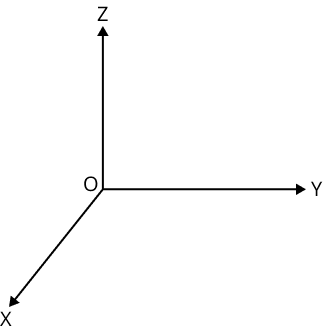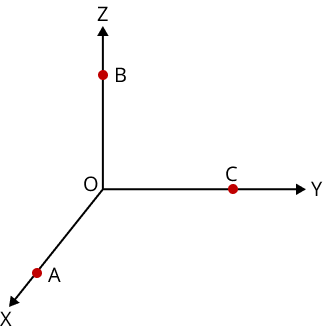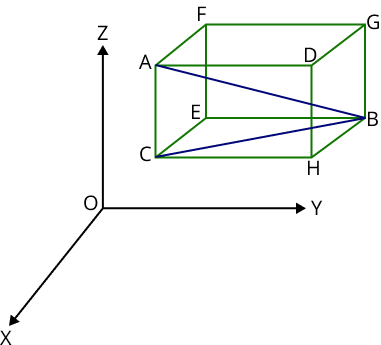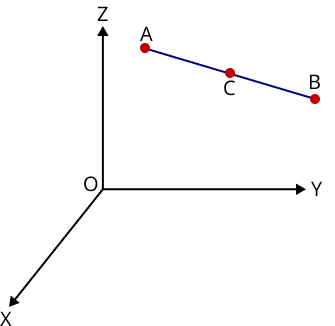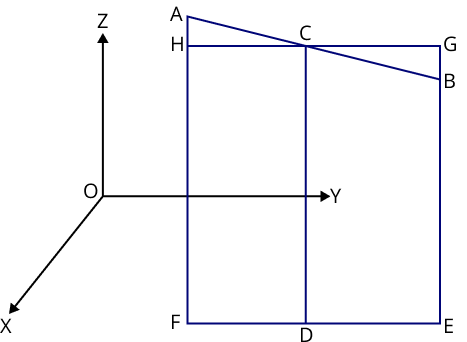Maths Notes for Chapter 11 Introduction to Three Dimensional Geometry Class 11 - FREE PDF Download
FAQs on Introduction to Three Dimensional Geometry Class 11 Maths Chapter 11 CBSE Notes - 2025-26
1. What are the main principles a student should focus on during last-minute revision of Introduction to Three Dimensional Geometry?
The most important principles to revise are the coordinate axes, types of coordinate planes, formulas for distance between two points and from the origin, the section formula (internal and external division), direction cosines and ratios, and identification of octants. Regularly summarising these, alongside quick practice of key formulas, supports rapid concept recall for exams.
2. How is a three-dimensional coordinate system structured for solving Class 11 Maths problems?
A three-dimensional coordinate system uses three mutually perpendicular axes—x, y, and z—that intersect at the origin (0, 0, 0). The intersection of these axes forms three coordinate planes (XY, YZ, XZ) and divides space into eight octants. Positioning any point or object involves determining values along each axis.
3. Which concepts should be linked first when creating a concept map for Chapter 11 revision?
Start by linking coordinate axes and planes as the foundation. Next, connect the distance formula, then integrate the section and mid-point formulas. Continue by adding octants, then branch out to direction cosines and direction ratios. This sequence visually aligns with the logical flow of the chapter and simplifies recall.
4. What role do direction cosines and direction ratios play in 3D geometry revision notes?
Direction cosines (l, m, n) measure the angle a line makes with each axis, crucial for understanding line orientation in space. Direction ratios are sets of numbers proportional to the direction cosines. Their relationship, especially the fact that l² + m² + n² = 1, is regularly tested and should form a revision focus for grasping spatial directions.
5. How are the octants in 3D space defined, and what is their significance?
Octants are the eight subdivisions of 3D space formed by the intersection of the three coordinate planes. Each octant corresponds to a unique combination of positive and negative signs for x, y, and z coordinates. Recognizing octants is vital for interpreting the location of points and is commonly assessed in CBSE Class 11 exams.
6. Why is it essential to understand the distinction between internal and external division in the section formula for exam revision?
The section formula helps find the coordinates of a point dividing a line segment in a specific ratio. For internal division, the ratio is within the segment. For external division, the ratio lies outside. Knowing both versions ensures accurate answers for questions involving midpoints, ratios, or external points in 3D exam problems.
7. How can students avoid common misconceptions while revising three-dimensional geometry concepts?
Misconceptions often occur when students overlook the z-coordinate in 3D formulas, misidentify coordinate plane properties, or confuse direction cosines with direction ratios. To avoid these, refer to official NCERT revision notes, use diagrams to visualise questions, and carefully check coordinate signs and ratios before applying formulas.
8. In what ways does revising key terms support a stronger grasp of the chapter for CBSE 2025–26?
Revising key terms like coordinate axes, planes, octants, distance formula, section formula, mid-point, and direction cosines ensures quick recall in exams. It also helps answer objective and conceptual questions rapidly, reducing exam stress and maximising marks for one-mark and short-answer questions.
9. How does understanding the spatial significance of the coordinate planes benefit problem solving in this chapter?
Knowledge of the coordinate planes enables you to instantly identify which coordinate is zero for any point lying on a specific plane. For example, all points on the XY-plane have z = 0. This understanding quickens problem solving and helps answer common CBSE conceptual and multiple-choice questions accurately.
10. What strategies can make revision more effective when preparing for CBSE Class 11 exams using concept maps in three-dimensional geometry?
Concept maps visually connect fundamental ideas such as axes, planes, formulas, direction cosines/ratios, and point properties. Using them during final revision allows students to quickly identify interrelationships, spot missing areas, and reinforce understanding—making them an efficient study aid before exams.

























